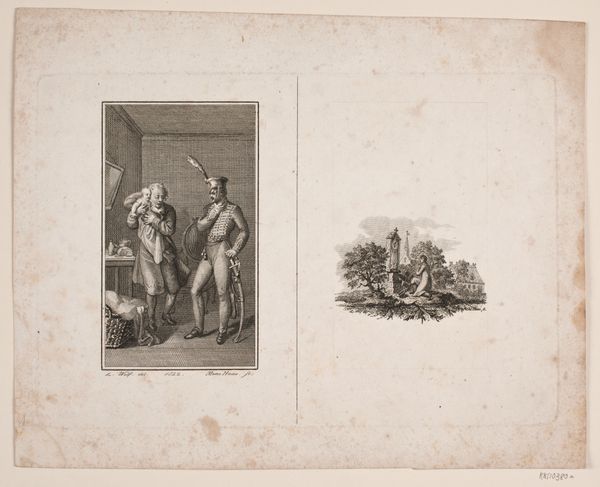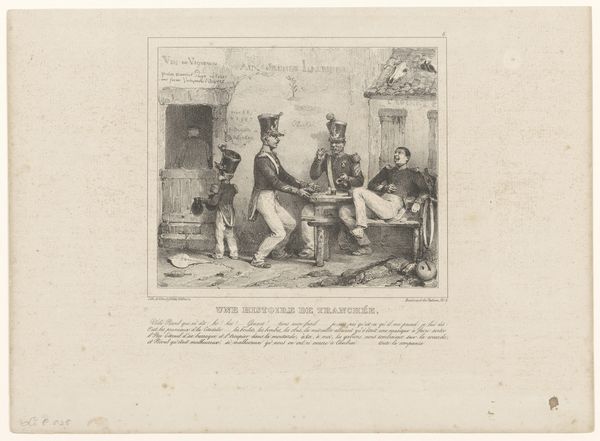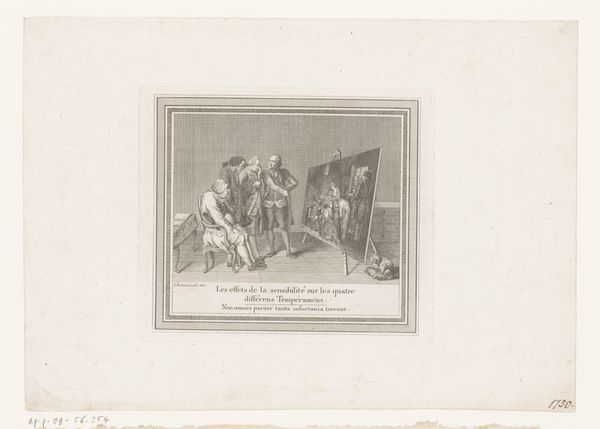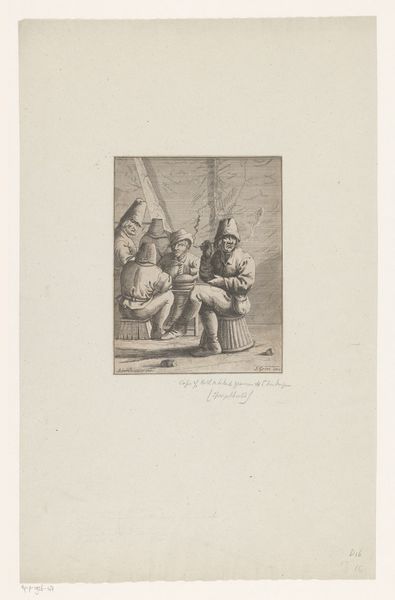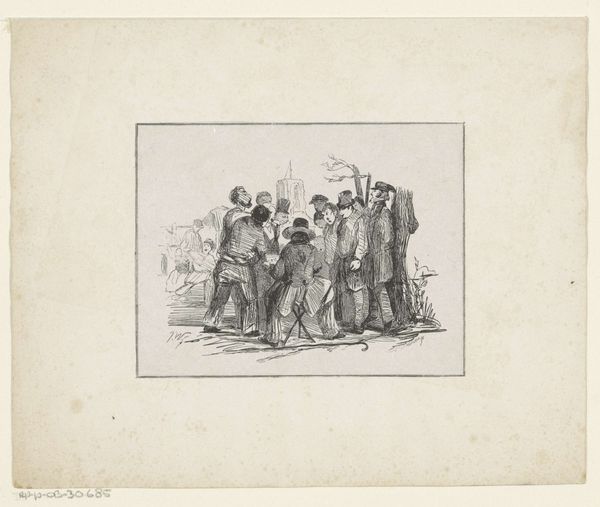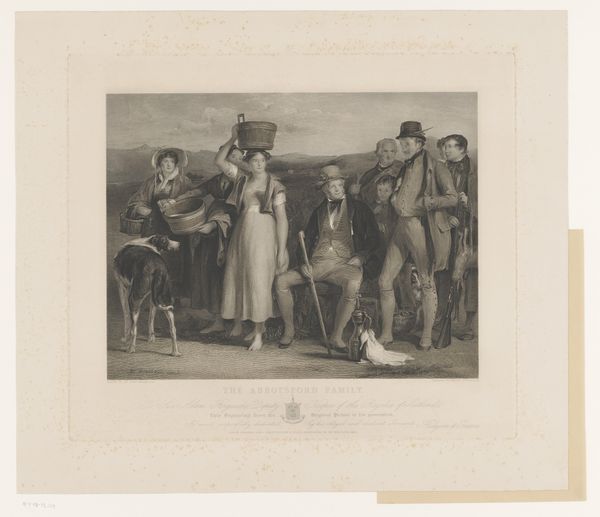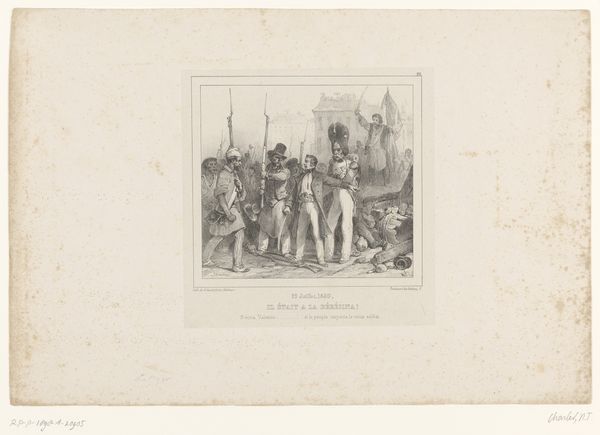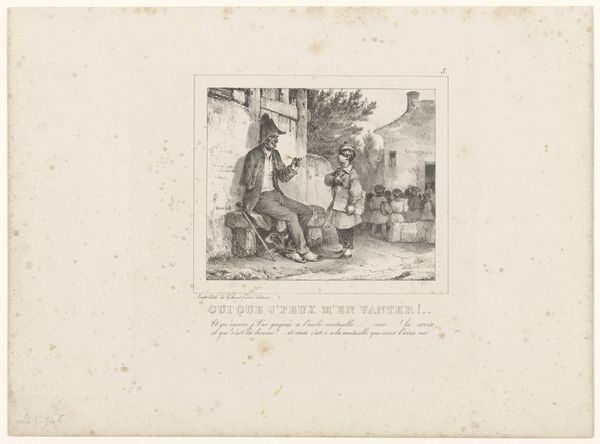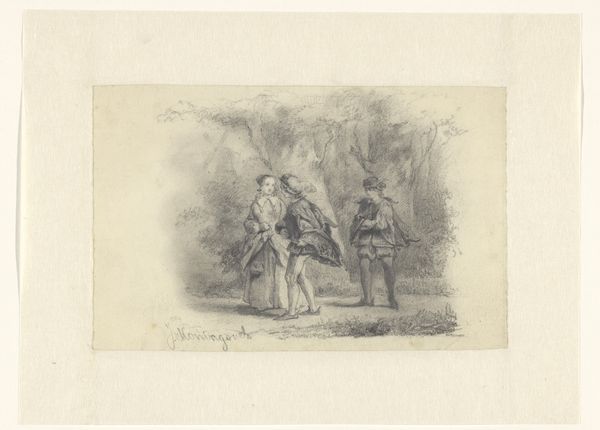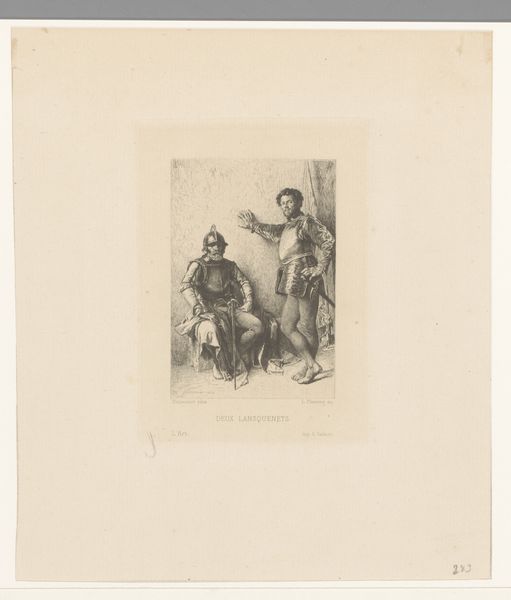
Twee oude soldaten proberen een ruzie tussen twee jongere soldaten te sussen 1823
0:00
0:00
nicolastoussaintcharlet
Rijksmuseum
drawing, paper, pencil, charcoal
#
portrait
#
pencil drawn
#
drawing
#
aged paper
#
light pencil work
#
narrative-art
#
caricature
#
pencil sketch
#
old engraving style
#
figuration
#
paper
#
personal sketchbook
#
romanticism
#
pencil
#
ink colored
#
sketchbook drawing
#
pencil work
#
genre-painting
#
charcoal
#
history-painting
#
sketchbook art
Dimensions: height 271 mm, width 368 mm
Copyright: Rijks Museum: Open Domain
Editor: So, this is "Twee oude soldaten proberen een ruzie tussen twee jongere soldaten te sussen," or "Two Old Soldiers Trying to Calm an Argument Between Two Younger Soldiers," by Nicolas Toussaint Charlet, done in 1823. It's a drawing. My first impression is… well, it's got this raw, immediate feel. Like a scene snatched right out of life, but a life from another era. What strikes you most when you look at it? Curator: You know, I feel a kinship with the older soldiers. Not in age, of course, but in the sense that art often places us in the role of mediators. This drawing, it whispers stories of generational conflict, doesn't it? The bravado of youth versus the weary wisdom—or perhaps resignation—of age. Editor: Resignation, yes! They do seem tired. The way Charlet uses line, it's so loose, almost frantic in places, especially around the younger soldiers. Was he aiming for a specific effect, do you think? Curator: Absolutely. The frantic lines heighten the sense of unease and conflict, whilst the smoother, softer lines used for the older soldiers evoke a calming presence, like time smoothing out life's rough edges, and he knows exactly how to create drama with this medium. Look at the weight of the figures, the texture of the paper... do you think it's purely objective or is there something more intimate that’s conjured? Editor: Hmm, I see what you mean. Maybe the point isn't the fight itself, but this eternal struggle to guide the next generation? It gives it a universality, like it could be from any time. Curator: Exactly. Art often thrives on this tension between the specific and the universal. What feels immediate and particular suddenly expands, reflecting broader human experiences. Charlet's little squabble becomes a lens through which we glimpse at the unchanging theatre of life, and it whispers of generational divides, and also perhaps how quickly everything can escalate! Editor: I hadn’t considered that so literally! Thank you so much; it's fascinating to see it that way.
Comments
No comments
Be the first to comment and join the conversation on the ultimate creative platform.


